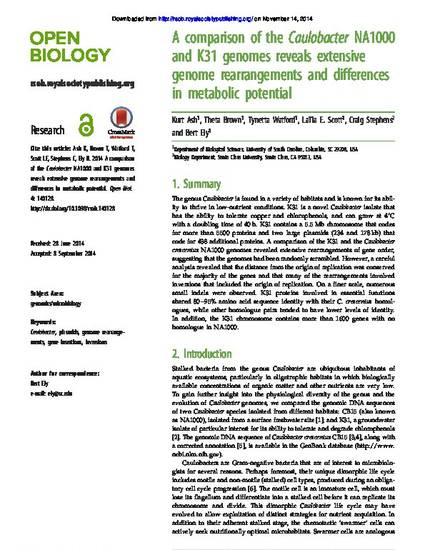
- Biology,
- Genomics and
- Microbiology
The genus Caulobacter is found in a variety of habitats and is known for its abilityto thrive in low-nutrient conditions. K31 is a novel Caulobacter isolate that has the ability to tolerate copper and chlorophenols, and can grow at 48Cwith a doubling time of 40 h. K31 contains a 5.5 Mb chromosome that codes for more than 5500 proteins and two large plasmids (234 and 178 kb) thatcode for 438 additional proteins. A comparison of the K31 and the Caulobactercrescentus NA1000 genomes revealed extensive rearrangements of gene order,suggesting that the genomes had been randomly scrambled. However, a careful analysis revealed that the distance from the origin of replication was conserved for the majority of the genes and that many of the rearrangements involved inversions that included the origin of replication. On a finer scale, numerous small indels were observed. K31 proteins involved in essential functions shared 80-95% amino acid sequence identity with their C. crescentus homologues,while other homologue pairs tended to have lower levels of identity.In addition, the K31 chromosome contains more than 1600 genes with nohomologue in NA1000.
